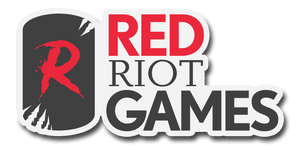Gaining an advantage through Value: Damage Breakpoints
Gaining an advantage through Value: Damage Breakpoints
By: Dimos Kaloupis
This is the third and final article in the series on Value in Flesh and Blood.
One of the first things many players realize about Flesh and Blood, after they learn the basic flow of the game, is the value of cheap attacks that hit for four damage. Scar for a Scar, Life for a Life, and Snatch all punch above their weight class because they come in for an awkward amount of damage and have extra conditional effects. Go again, life gain, and card draw are all strong effects on these inexpensive cards, which take more than one card to block. Blocking with two cards feels terrible against these cards because they only cost one card to play, and by defending against it with two cards, you are at a disadvantage. Romping Club, Anothos, and often, Nebula Blade are good almost entirely because they hit for four damage.
In the current Blitz meta, Ira uses and abuses breakpoints to chip away damage on the already-low 20 life. The first Harmonized Kodachi hit nearly always hits for one damage, since it is so inefficient to block. The second hit, for two damage, is often blocked, not necessarily because of the damage threat, but because of the Mask of Momentum trigger. By this point in an average Ira turn, she has dealt one damage, stripped a card from hand, still has an action point, and often a resource point floating. The most common resolution to this is another attack for anywhere from four to seven damage, once again forcing awkward breakpoint damage. All at the cost of a single blue card to pitch, a red attack to play, and possibly a counter off Fyendal’s Spring Tunic. Another more average deck would pitch one card to play a second card for six or seven damage, which is much easier to block and does not provide the constant threat from Mask of Momentum, nor does it effectively chip away at the opponent’s life.
Ira combines the value of her board state (her passive hero ability, Mask of Momentum, and Kodachi) to synergize with awkward breakpoints, such as Kodachi for one damage or attacks for four or five damage. This incremental value, turn-over-turn, whittles an opponent down into defeat. Ira is also generally unique in that her use of breakpoints is not to push on hit effects (generally excepting Command and Conquer for seven damage), but primarily for damage. Nearly every other class derives most of their use of breakpoints for on-hit effects.
Bravo can also provide some interesting examples of breakpoints being used to push damage. In contrast to Ira, Bravo’s strongest breakpoints come not from dealing awkward amounts of damage but dealing too much damage to stop. An Emerging Dominance (red) combined with Crippling Crush, and possibly the effects of Potion of Strength, Crater Fist, or Pummel, will deal more than the 12 damage that can generally be blocked either by a hand of cards or a defense reaction, card from hand, and armor as it will likely be Dominated. By breaking over their defending capabilities, the devastating on-hit effect will be guaranteed to land.
Wizard also uses breakpoints to derive value, by mixing on-hit effects and breaking over the opponent’s maximum defending ability. Chip damage via arcane is rarely effective, as the cards and resources pitched to defend the first instance of damage can be rolled over to the next attack. A single blue card can block one and then two arcane damage, which it cannot do while defending physical attacks. Breakpoints to push for on-hit effects are more flexible thanks to the instant-speed use of Crucible of Aetherweave and the unique speed of Metacarpus Nodes as a way to compensate for how easy it is to block the piecemeal damage.
The game plan changes depending on how much arcane barrier your opponent has. Low arcane barrier decks are susceptible to the powerful effects of Lesson in Lava and Sonic Boom, both of which can come in for four damage with the weapon buff. If an opponent has arcane barrier three, this is a guaranteed on-hit effect and can be exploited for value. If they have arcane barrier five, then that becomes the new breakpoint to push over with a Stir the Aetherwinds and Forked Lightning combination.
Overall, taking advantage of breakpoints is about making things awkward and inefficient for your opponent whilst you play your hand out efficiently. Your value is derived from this imbalance, whether it be tiny chip damage, huge over-the-top damage, or awkward-to-block on-hit effects.
By combining the three discussed elements of value in Flesh and Blood, Board State, Information, and Breakpoints, we can see every top-tier deck from past and present metagames. If you want to build the next meta-shaping deck, it may be worthwhile to consciously factor these elements in when you develop your game plan and win conditions.


